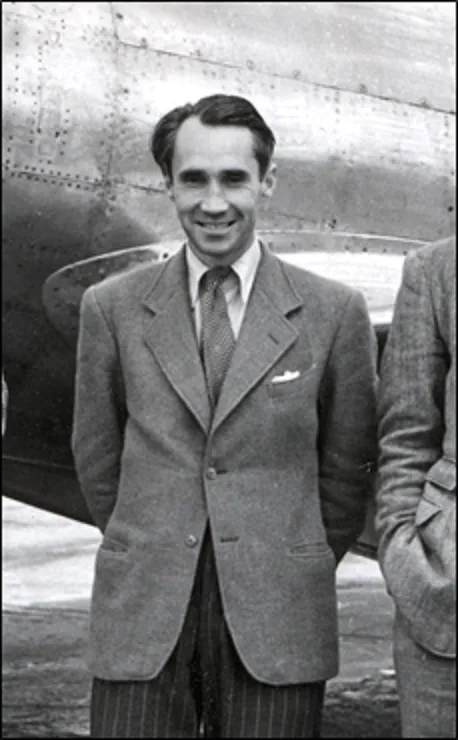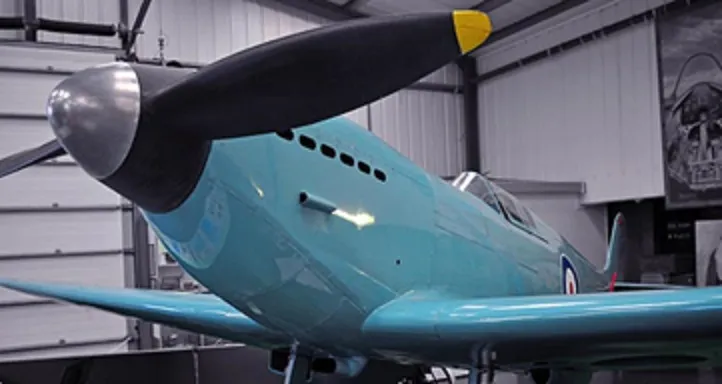Jeffrey Kindersley Quill 32110
QBE AFC FRAeS



| Squadron/s | 17 SQN RAF 65 SQN RAF |
| Mustering / Specialisation | Pilot |
| Date of Birth | 01 Feb 1913 |
| Date of Death | 20 Feb 1996 |
| Contributing Author/s | Wikipedia, Peter Arnold Updated Steve McGregor The Spitfire Association |
Jeffrey was born on the 1 February 1913 in Littlehampton, Sussex.
He was a British Royal Air Force officer, RNVR officer and Test pilot and the second man to fly the Supermarine Spitfire after Vickers' chief test pilot, Joseph "Mutt" Summers. After succeeding Summers as Vickers' chief test pilot, Quill test-flew every mark of Spitfire, originally designed by R. J. Mitchell.
Quill wrote several books about the Spitfire. He was President of the Spitfire Society. Jeffrey Quill was born at Littlehampton, Sussex, England in 1913, the youngest of five children, and was educated at Lancing College, which overlooks Shoreham Airport. The aerial activity overhead quickened the already air-minded Quill's resolve to take a non-commissioned career in the Royal Air Force long before he left school in 1931. While still a pupil at Lancing, Quill had attended the famous annual RAF displays at Hendon, and two years later he participated in the event, taking part in a mock bombing attack on 24 June 1933.
At the age of 18, Quill was accepted into the Royal Air Force as an Acting Pilot Officer. He learned to fly on Avro Tutor biplanes and went solo after the remarkably short time of 5 hours 20 minutes (9 hours being regarded as the norm) flying time. He graduated on to Siskin IIIA advanced trainers, and his flying ability was assessed as exceptional. In September 1932 he joined No. 17 Squadron RAF at Upavon, where he began flying Bristol Bulldog fighters. He flew as often as possible in order to familiarise himself with the aeroplane, practising aerobatics and flying in cloud. He was well aware of the dangers of flying and he later wrote:
"Unless aerobatics were practised assiduously to the point where one was familiar with every conceivable combination of speed and altitude of which the aircraft was capable, one was not master of the aeroplane. Therefore a day would come when the aeroplane decided that it was in charge instead of the pilot, and that would be the last day. I never had cause to modify that view, and I kept my aerobatics well honed to the day of my last flight as a pilot."
At the end of 1933 Quill was posted to the RAF Meteorological Flight at Duxford. There, flying open-cockpit Siskins, the unit made twice-daily scheduled flights (except on Sundays) up to 25,000 ft to collect data for weather reports. After Quill took command of the flight in November 1934 he and his team managed to fly every slot for a whole year, regardless of unflyable weather, without missing a flight. For this achievement Quill was awarded the Air Force Cross at the age of 22. On one occasion, when letting down through cloud, his Siskin hit the ground very hard but in perfect landing attitude, bounced over a hedge and overturned, pushing Quill's head forward on to the cockpit coaming (its raised border). Had he not already received a broken nose from a boxing accident he would have qualified for the "Siskin nose" - a characteristic of many pilots of the period.
In January 1936 Quill joined Vickers (Aviation) Ltd at Brooklands as assistant to its chief test pilot, Joseph "Mutt" Summers. His initial task was the testing of the Wellesley bomber, and it was while flying a production Wellesley that Quill had a narrow escape. The 74 ft 7 in-wingspan bomber refused to recover from a spin and at 3,000 ft Quill decided to bail out. As he descended, the spiralling bomber seemed intent on slicing the pilot with its wings; but he landed safely not far from the Kingston bypass.
There was some rivalry between Vickers (Aviation) Ltd and Hawker Aircraft, whose Hurricane had first flown four months earlier. Jeffrey Quill's long association with the Spitfire began when, aged 23, he made his first flight in the prototype K5054 on 26 March 1936 – Mutt Summers having made the maiden flight three weeks earlier – and his priority was to get the Spitfire cleared for acceptance by the RAF. The Spitfire needed a great deal of work before it was deemed safe for young RAF pilots to fly, and it did not enter squadron service until July 1938. However, developed through many marks and variants, the Spitfire remained a first-line fighter throughout the war.
During the Second World War, Quill was in charge of development and production flying, a job that he took very seriously - so seriously that he felt he must obtain first-hand combat experience. He was temporarily released on 5 August 1940 to join 65 Squadron at RAF Hornchurch,[3] privately hoping that it would be a permanent appointment. On 16 August he shot down a Messerschmitt Bf 109 and two days later he shared a victory over a Heinkel He 111. His combat days were short-lived because he was recalled after 19 days,[3] but they made Quill all the more determined to make the Spitfire an even better fighting machine.
In 1942 the Luftwaffe's Focke-Wulf Fw 190 was gaining the edge over Allied fighters, and it was an urgent priority to capture an example. For a while Quill was on standby to be taken to France in order to hijack a Fw190 back to England. Fortunately an example was delivered to the RAF on a plate in the meantime, when a disorientated German pilot, Oberleutnant Arnim Faber, mistook the Bristol Channel for the English Channel and landed a Fw 190 A-3 at RAF Pembrey in south Wales.
In the immediate postwar era, Quill continued as a test pilot, flying the latest Supermarine jets including the Attacker and Swift; he later became a military aircraft marketing executive for the British Aircraft Corporation. He also became a prolific author, chronicling the Spitfire and its legacy through: Flying The World's Great Aircraft (1982), Spitfire: A Test Pilot's Story (1983), Spitfire (1986) and Birth of a Legend: Spitfire (1987).
After Jeffrey Quill's death in 1996, the British aviation society, the Air League commemorated Quill by naming a new award after him, and since 1997 they have awarded the Jeffrey Quill Medal annually for an outstanding contribution to the development of air-mindedness in Britain’s youth.
Having retired with his wife Claire to the Isle of Man, Jeffrey Quill became involved with an annual lecture given by the Association of Manx Pilots. This annual lecture is now known as the Jeffrey Quill Memorial Lecture. Jeffrey Quill died 20 February 1996 and is buried in St Andrews church yard, Andreas, Isle of Man. The church is near to the former RAF Andreas, which operated Spitfires from 1941 - 1942.
